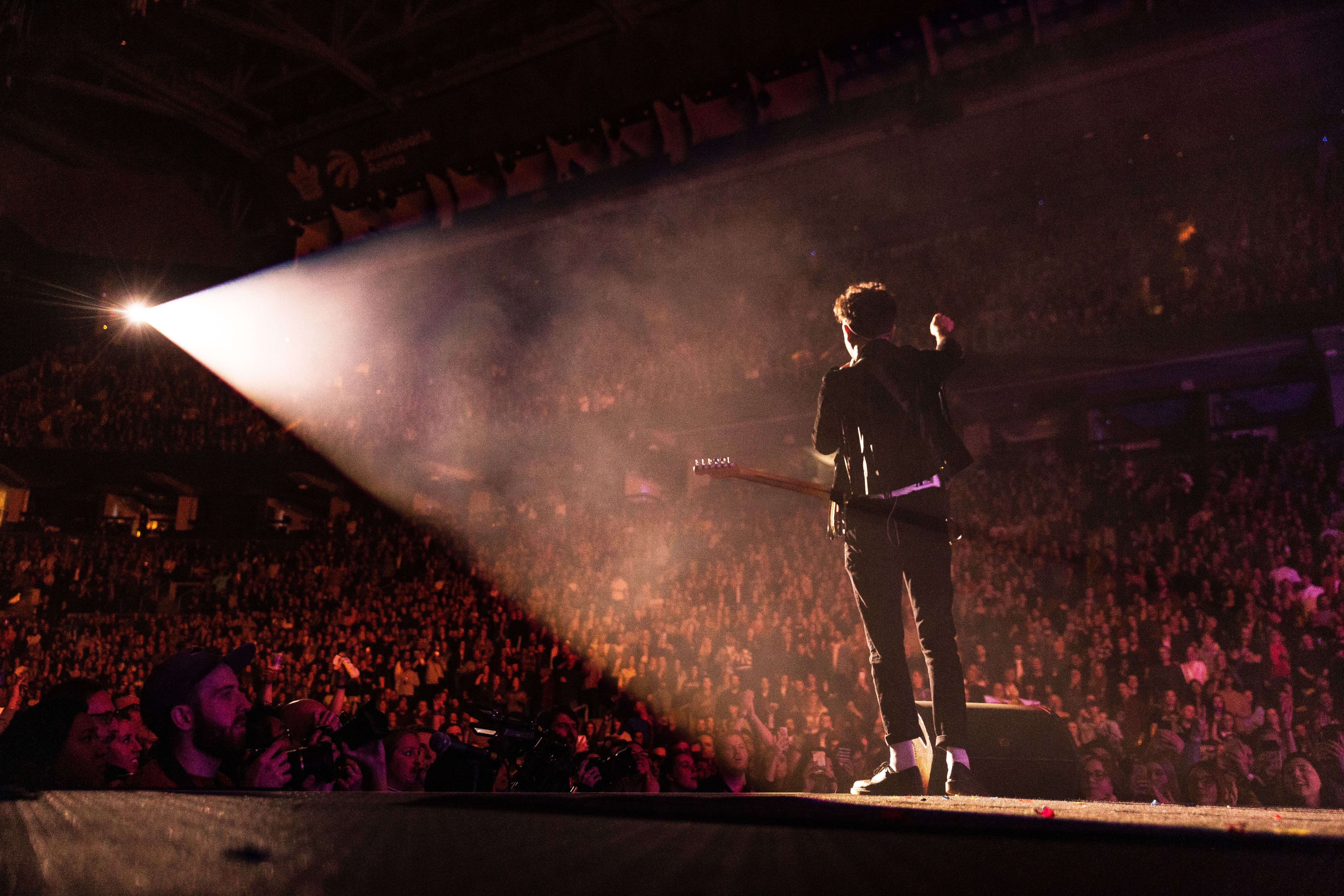Streaming services provide an excellent opportunity for new artists to get in front of millions of listeners. Although, new artists face the biggest uphill battle in order to take advantage of this opportunity.
Some artists believe that streaming services don't pay them enough to make a living. Some listeners argue that they wouldn't have discovered the artist otherwise.
Here is a breakdown of exactly how streaming services are helping and hindering new artists.
Brief History of Streaming Services
Born in the wake of illegal streaming, Spotify and other services offered a legitimate way for people to gain access to music. Sites like Napster started to decimate the once-booming economy of physical music sales and the industry needed another way to make up for the lost revenue.
Founded in 2006, Spotify has grown to become the largest streaming service for music with over 345 million active listeners and 155 million paying subscribers. It's not the only streaming service around and there are now plenty of free music streaming options to get your tunes.
Now, 15 years later, artists have both blamed and applauded streaming services for their role in bringing the music industry back from the grave.
Spotify, Tidal, Apple Music, and the like have created a place for artists to gain attention and notoriety to its millions of listeners. At the same time, they have created even more discrepancy between the haves and have-nots of the music industry by offering extremely low payouts and biased algorithms.
The debate on whether these streaming services are here to help or hinder musicians is still a vigorously debated topic. Let's look into the ways these services are both helping and hurting the artists they intend to profit from.
How Streaming Services Help Artists
The addition of streaming services to the music industry has regained some momentum for the industry that suffered throughout the 2000s. This success has been great for many artists who enjoyed increased label budgets, larger built-in audiences, and passive income.
More Revenue to Go Around
With the increase in revenue for major labels due to streaming services, smaller artists signed to those labels can benefit from increased marketing. The more a label makes, the more it is able to invest into its roster of artists, giving those a chance who may not have had it otherwise.
This also helps unknown artists who aren't signed to labels. They now have an opportunity to be discovered by PR reps who are funded by the additional resources the industry is enjoying.
If the label wasn't doing as well, they would be forced to double down on the artists that are already making money instead of looking for new talent.
Built-In Audiences
In order to make money from music, being seen by a small audience isn't enough. You need to have a large fan base. This could take years, if not decades, to garner the amount of support you need to be a full-time musician.
With the success of large streaming services like Spotify or YouTube, finding that audience could only take one viral song.
Justin Bieber is an example of an unknown artist that found success because of the videos that he and his family posted on YouTube that quickly went viral.
Without the large, built-in audiences that streaming platforms provide, musicians wouldn't be able to get nearly as much exposure using traditional methods of advertising and promoting.
Passive Income Stream
With each song streamed, artists make fractions of a penny for their work. Although this isn't a large amount of money, once the song is published on Spotify the hard work is over.
All future money generated from that song becomes purely passive income. The more songs an artist has in their catalog, the more opportunities that artist has to make passive income.
Before streaming services, no such model existed for musicians. Physical CD sales could be expected to sell quickly when a new album was released, but sales would quickly decline until album sales were minimal.
Now, artists have the chance to continually make money from every individual song, without anyone needing to buy their music.
How Streaming Services Are Hurting Artists
Even with a built-in audience, increased revenue for the industry, and passive income models, streaming services have still faced understandable criticism. They have extremely low payouts, biased algorithms, and favor big-name artists.
Low Payouts for Artists
The controversy over how much artists get paid for streaming platforms will never be put to rest until platforms like Spotify clearly state how they pay their artists.
Spotify launched a site called Loud & Clear, which aims to educate on how artists make their money, but there has never been an official word or calculation that shows how this is computed.
Industry experts have estimated that artists make on average $0.004 a stream. This means an artist would need around 250 streams to make a single dollar.
For lesser-known artists trying to make a living from their music, this revenue is too low to make a considerable income.
Only big-name artists on major labels will enjoy the price structure since they receive hundreds of thousands, if not millions, of streams a year. This only creates a bigger disparity between the bigger and lesser-known artists.
Biased Algorithms
As the music industry continues to move into the online world, the use of computer algorithms in streaming services becomes a bigger part of how we consume our music.
Streaming platforms will use these algorithms to curate specific playlists made just for you and suggest specific songs based on your previous selections. As the algorithm continues to learn your patterns it continues to give you more of the same types of music.
This can be devastating for a new artist you might have enjoyed, but never get to hear, because their style of music doesn't match what you continue to listen to every day.
The algorithms can also have a negative effect on trends outside of streaming services, like Spotify. For example, background playlists have become more popular on Spotify, like calm music you can listen to while doing chores or studying.
As the algorithm continues to promote these styles, musicians and producers will try to replicate these song structures and formats in order to be featured more on the platform.
The algorithm itself can lead to the industry paying more attention to what a computer is telling them rather than what the audience actually wants to hear.
Unknown Musicians Are Forgotten
When the playing field favors the more well-known artist, and the pay structure is built for those who receive large amounts of attention, lesser-known artists will suffer.
Never before has there been a time for new musicians to be in front of as many people as is now possible. Yet, most of these musicians will be completely overlooked because of how the system is built.
In order for artists to get recognized at all, they still have to generate most of the buzz for themselves and create a dedicated following. These were the same methods in place before streaming services took over the industry.
To make matters worse, only well-established labels are negotiating and making deals with streaming services. Independent labels or individual artists have no influence on major decisions that are being made within the streaming industry.
How to Discover New Indie Music
On one hand, the number of monthly listeners and paying subscribers to some of the largest streaming services online provide endless opportunities for new artists. On the other hand, new artists rarely get a chance to get showcased on such a large level.
To give new artists a fighting chance, you'll need to use other sites to find your next favorite musician.




